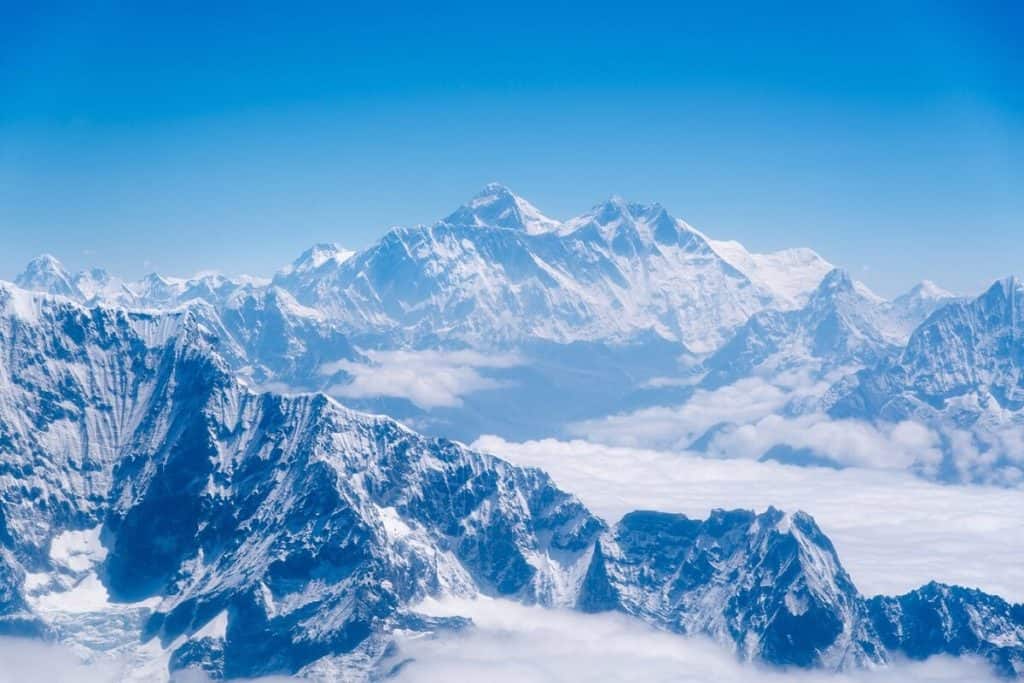How long does it take to climb Mount Everest
If you’re thinking about climbing Mount Everest and wondering how much time you need to block off work, family, and life in general — here’s the no-BS breakdown.
Short answer? You’re looking at 6 to 9 weeks total, start to finish. That includes flying into Nepal, hiking to Base Camp, acclimatizing, summit push, and getting your butt back down safely.
Let’s break that down like a real schedule.
The trek to Everest Base Camp (EBC)
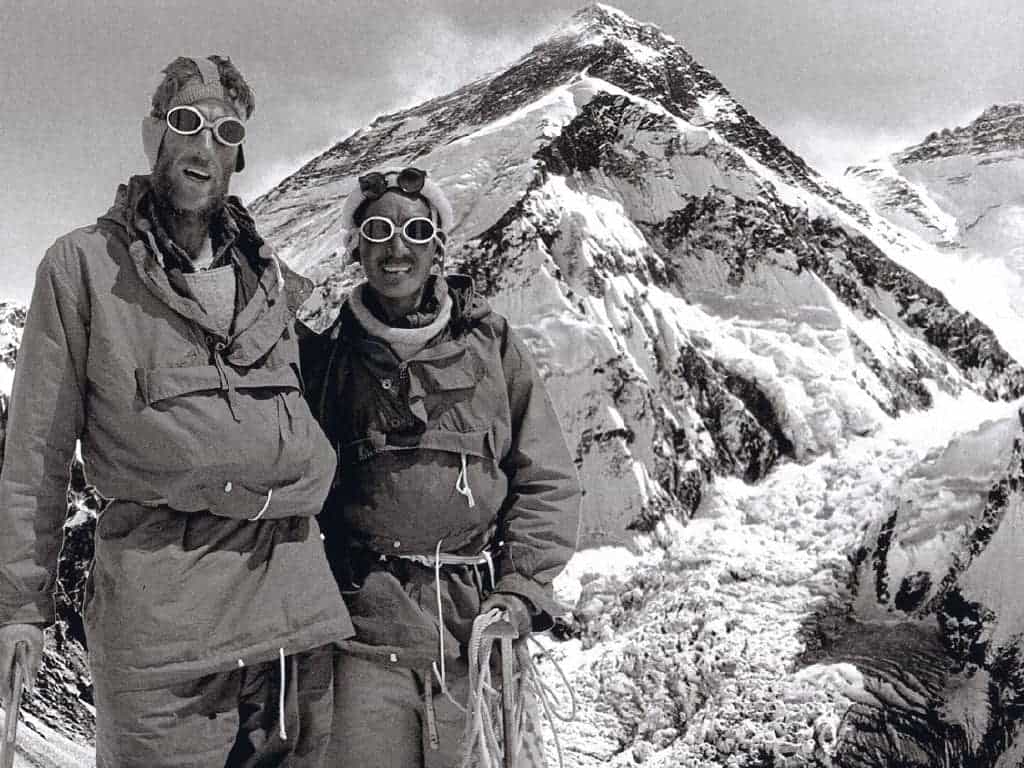
Time: 8 to 12 days
Most climbers fly into Kathmandu, then take a tiny plane to Lukla (which is an adventure on its own). From there, you trek to Base Camp. It’s not a casual stroll. Think daily 6-7 hour hikes at altitude.
You don’t want to rush this. Going too fast ups your risk of altitude sickness. A lot of people take rest days in Namche Bazaar and Dingboche.
What this leg involves:
- 40-ish miles of hiking
- Gradual altitude gain to 17,600 ft
- Basic tea houses for sleep
Some teams use helicopters to skip the walk, but if you’re planning to summit Everest, you’ll need the time on foot to help your body adjust.
Acclimatization at Base Camp
Time: 2 to 3 weeks
This part feels slow and repetitive. But it’s where your body starts adapting to the lack of oxygen.
You’ll do what climbers call “rotations”: climbing to higher camps (Camp 1, Camp 2) and coming back down to Base Camp to sleep. This process trains your lungs to handle the insane altitude higher up.
It looks something like this:
- Rotation 1: Base Camp to Camp 1, sleep, back down
- Rotation 2: Base to Camp 2, sleep, touch Camp 3, back down
- Rest, eat, hydrate, repeat
You’ll feel like you’re not making progress. But this step matters more than anything else.
Waiting on a weather window
Time: unpredictable (1 to 7+ days)
Summiting Everest is all about timing. There are only a handful of safe days (called “weather windows”) in May when winds drop enough to climb.
Your guide team will be watching the forecasts like hawks. When a window opens, it’s go-time.
This is where patience really comes in. You might be fully ready but stuck in Base Camp just… waiting.
The summit push
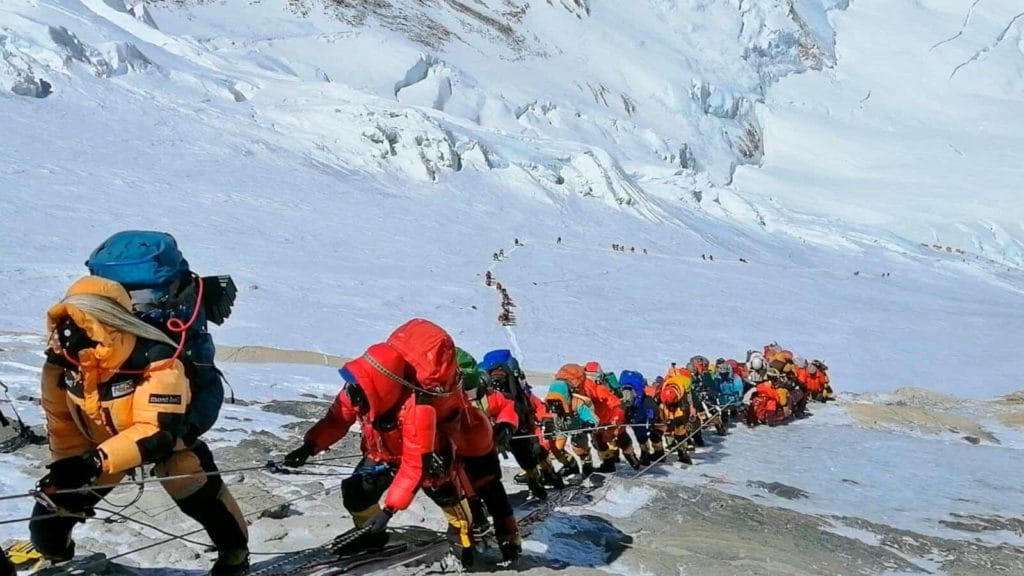
Time: 5 to 7 days
Once the call is made, everything moves fast:
Here’s a typical summit push schedule:
- Day 1: Base Camp to Camp 2
- Day 2: Rest at Camp 2
- Day 3: Camp 2 to Camp 3
- Day 4: Camp 3 to Camp 4 (a.k.a. the Death Zone)
- Day 5: Leave Camp 4 late at night, summit early morning, descend back to Camp 4 or 3
- Day 6-7: Descend to Base Camp
The summit push is brutal. You’re on bottled oxygen. It’s freezing. Everything is slower. But this is what you came for.
Descent and heading home
Time: 4 to 6 days
After summiting, you’re not done. You still need to get back to Base Camp safely, which takes 2-3 days depending on how cooked you are.
From there:
- Some people walk back to Lukla (another week)
- Others book a heli out if the weather and wallet allow
Add a couple days in Kathmandu before you fly home. You’ll probably want one day just to eat something besides dal bhat.
Total time breakdown
| Phase | Duration |
|---|---|
| Trek to Base Camp | 8–12 days |
| Acclimatization/Rotations | 14–21 days |
| Waiting for weather | 1–7 days |
| Summit push | 5–7 days |
| Return + travel buffer | 5–10 days |
| Total | ~45–60 days |
So yeah, you’ll need 6 to 9 weeks off, realistically.
What can change your timeline?
- Fitness level: Better fitness = faster recovery. But don’t expect shortcuts.
- Experience: Seasoned climbers might shave off a few days here and there.
- Weather: One bad storm can hold everyone at Base Camp for a week.
- Guides & logistics: Some guide companies have faster or more flexible schedules.
- Heli support: Helicopter rides can cut down the trek time at the start or end.
Can you do it faster?
Technically, yes. People have set speed records. Kilian Jornet did it in 26 hours from Base Camp. But that’s superhuman territory.
If you’re asking this question, then no — fast-tracking isn’t the move. Give your body the time it needs.
Gear checklist: What you actually need to climb Mt Everest
Here’s a practical gear list that doesn’t include fluff:
Clothing:
- Base layers (thermal tops/bottoms)
- Mid-layers (fleece or down)
- Outer shell (windproof/waterproof)
- Summit suit (insulated down suit)
- Gloves (liners + mittens)
- Beanie and balaclava
- Mountaineering boots (double insulated)
Climbing gear:
- Ice axe
- Crampons
- Harness
- Helmet
- Carabiners
- Jumar (ascender)
Other essentials:
- Sleeping bag (-20°F or lower)
- Headlamp + extra batteries
- Sunglasses/goggles (UV protection)
- Sunscreen + lip balm (high SPF)
- Insulated water bottles or thermos
- Snacks and energy gels
- First aid kit
Cost breakdown: The total cost for climbing Mount Everest
| Expense | Estimated Cost |
|---|---|
| Climbing permit (Nepal) | $11,000 |
| Guide company | $30,000 – $80,000 |
| Flights (Intl + local) | $1,000 – $2,500 |
| Gear & equipment | $5,000 – $10,000 |
| Insurance (evac + travel) | $500 – $1,000 |
| Tips + extras | $1,000 – $2,000 |
| Total | $50K – $100K+ |
The range depends on the level of support (Western vs. Sherpa-guided), your gear situation, and how much you want to outsource.
When Can You Climb Mount Everest?
Before taking on the daunting challenge of climbing this perilous mountain, you must consider many factors, primarily correct weather.
The weather up on Everest is extremely notorious and unpredictable. However, there are some particular months of the year when the weather is slightly less unpredictable.
Spring (April to May) and autumn (September to November) are considered the best seasons to climb Everest.
Climbing Everest during the Spring Season
During Spring, the weather is warm, and the views are unobstructed. The chances of rain or clouds are less in comparison to other seasons.
The wind might be a problem during this time, but considering other factors, such as avalanches, excessive snowfalls, fog, and mist, spring is the best time to climb Everest.
The weather during these months best suits the climbers.
Typically, most attempts are made during May. It’s a perfect time as the summer monsoon season approaches nearer. There is a science behind it.
What happens is that the jet stream shifts northward when the monsoon season comes nearer. As a result, the average wind speed gets reduced at the higher altitudes of the mountain.
Climbing Mount Everest during the Autumn Season
Autumn starts after the monsoon clouds pass away. It is said to be the second-best time to summit Everest after the spring season.
This time of the year becomes risky because the jet stream is pushed northward but temporarily.
It can change direction at any time.
The additional monsoon snow deposition and the dynamic jet streaming risk can disrupt the weather pattern, making climbing more challenging during these months.
Risk factors while climbing Mount Everest
The Mount Everest expedition is an extreme venture which can sometimes lead to a fatal result.
Several factors affect the ascent, such as the climber’s physical and mental fitness, weather conditions, proper food, rest, acclimatization level, etc.
The Mount Everest expedition is more complicated than our imagination.
You will need to adapt to every possible situation, no matter how ominous the signs are.
Climbers ascending to the peak will experience altitude sickness, freezing temperatures, strong wind, and hazards like avalanches and the Khumbu Glacier. Climbers have become victims of falls, serac collapse, exposure, frostbite, and avalanches, to name a few.
Apart from these, inexperience is also a primary reason for the deaths on Everest.
There usually is a leader in the group to ensure the expeditions are safe and successful. Respecting the leader’s decisions and obeying the rules is essential for survival in such an extreme adventure.
There are various effects of altitude on human bodies.
Almost every climber is likely to face a loss of appetite, digestion difficulties, dizziness, suffocation, insomnia, and so on.
Carrying the backpacks with food stock, gears, equipment, etc. adds another difficulty.
It’s no new thing for climbers to lose up to 20 pounds of their body weight during a successful Everest expedition.
Food and nutrition for the expedition
When you are at the highest altitude from sea level, your body shows changes in metabolism.
Your body prioritizes blood to vital organs such as your brain and cardiovascular system. The digestive system becomes the second priority. Due to this, it is highly recommended to consume food with more carbohydrates and sugar.
Such food breaks down quickly and is easy to digest rather than proteins.
Mountaineers indulge in extreme climbing during the expedition, allowing the body to burn many calories.
There is a variety of food to choose from before reaching the base camp. The breakfast may include toast, cereals, eggs, bread, porridge, and fruits.
Lunch is an essential meal in Nepalese society. Climbers get a variety of items to choose dumplings, noodles; and, the most popular amongst the locals are Dal (Lentil Soup), Bhat (Boiled Rice), Tarkari (Vegetables), optional Meat, and Achar (Pickle).
This is a high-nutrition diet, which is very beneficial for climbers.
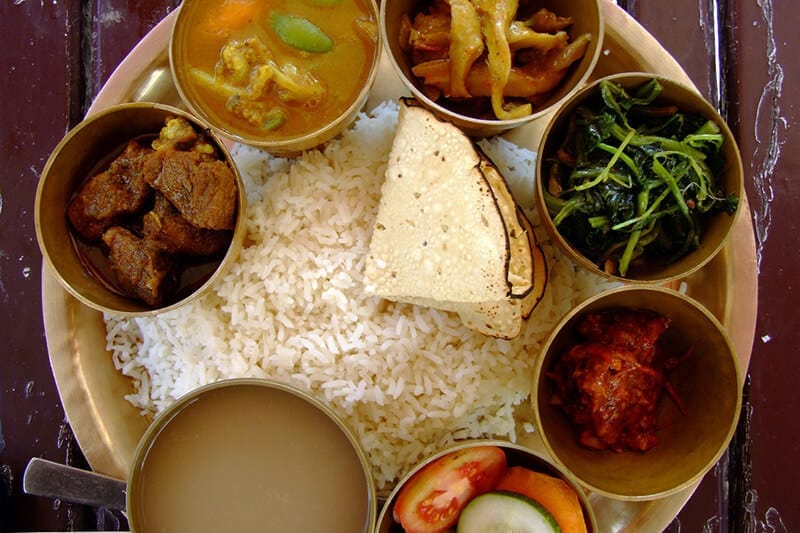
While heading towards the camp, expeditors usually carry nuts, chocolates, energy bars, and even dry meats. Anything that is high in carbohydrates and replenishes the lost energy is essential.
People chip the glacier’s ice for the water and melt it for drinking, cooking, cleaning, and bathing.
Upon reaching the camp, expeditors again eat “dal (lentil), bhat (rice), and tarkari (meat/vegetables). It is a healthy local cuisine; it gives Sherpas the much-needed energy to carry their luggage and equipment further up the mountains.
After reaching Camp 4, the final push to the peak is hard, and the body needs more energy and food. Due to the altitude, many expeditors feel nauseous, and eating is hard now.
Climbers usually carry energy gel packets in their pocket (e.g., SIS Energy Electrolyte or Powergel Carbohydrate Gel).
These modern gels have an isotonic, electrolyte formula containing rapidly absorbed carbohydrates and are very easy to intake. The packet top can be torn open with teeth, and the gooey contents can be easily squeezed into the mouth.
It is the most effective and quick way to deliver the much-needed energy boost in harsh environments.
Some of the food that the famous Everest climbers carry for this audacious venture are:
- Dried Reindeer Heart
- Mackerel in Tomato Sauce
- Olive Oil
- Nuts
- Oatmeal
- Eggs
- Cheese
- Chocolate
- Coffee
- Garlic
- Soylent
For the hydration to the summit push, climbers usually carry 1 ltr of warm water inside their down jacket as this prevents the water from freezing up. Some climbers add electrolyte and magnesium tablets, replenishing vital electrolytes and sodium lost through sweating.
Age limit and attempts made every year
The Nepalese government has implied a rule depriving age groups lower than 16 of climbing Mount Everest with no upper age limit. Whereas the age group of 18-70 can climb Mount Everest from the Chinese side.
The age limits were set after Romero and Poorna summited Mount Everest.
Mount Everest expedition is permitted by both the countries: Nepal and China. Collectively, an average of 800 people climb Mount Everest every year.
There is a minimum of 5-10 deaths per year. More expeditions take place from the Southern side—from Nepal. So, the death rate is also a bit higher here than the Northern side.
We’ve heard many real stories related to Mount Everest. It’s breathtaking to know how Reinhold Messner climbed up Mount Everest without supplemental oxygen.
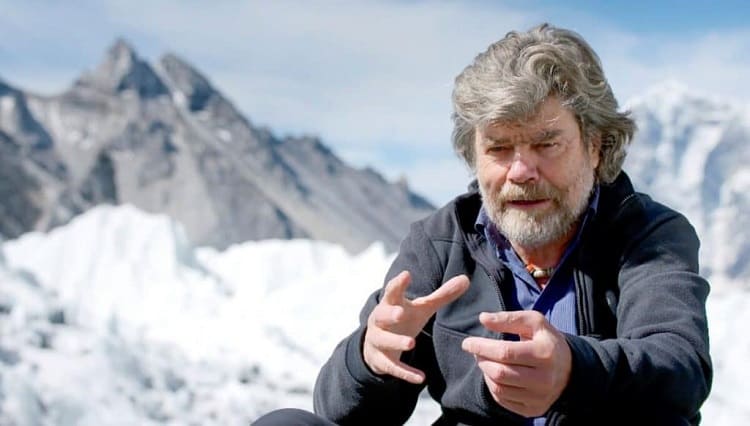
An 80-year-old Yuichiro Miura marked a thumping Mount Everest summit, becoming the oldest man to climb it.

Some climbers summit Mount Everest and return safely to their respective homes.
At the same time, some lose their life on the way up the mountain. Some people die on the way down, even after summiting the peak.
One must have a healthy physical and mental body and proper food and diet intake beforehand and during the mountain expedition.
Click here to learn more about how to train for hiking to the Everest Base Camp.
Quick FAQ About Mount Everest climb
Q: Can you climb Everest in under a month?
A: Not unless you’re using massive shortcuts like pre-acclimatization chambers, helicopters, and elite guides. Even then, it’s risky.
Q: How much does the climb cost?
A: Anywhere from $35K to $100K+, depending on your guide company, logistics, and extras.
Q: Is it safe?
A: As safe as an 8,848-meter mountain can be. Proper prep, good guides, and smart choices make a big difference.
Q: How tall is Mount Everest?
A: Mount Everest is the highest point on this planet at 8,848.86 meters (29,0129 feet) above sea level. It is 239 meters more elevated than the second tallest peak, Mount K2.
Q: What is the average time to climb Mount Everest?
A: It takes 6-10 weeks (two months) to climb Mount Everest. You will take 19 days to trek to the Everest Base Camp from Lukla. After that, you will need an average of 40 days to summit Mount Everest.
Q: Why do people climb Mount Everest at night?
A: As you can have the whole light on the most challenging and technical part of the summit, the last summit push is done at night from Camp 4 to the summit of Mount Everest.
You can use headlamps to see the paths while climbing at night. It will be past dawn when you reach the Hillary Step, the hardest part of the trail. Having full daylight helps you avoid missteps and accidents.
In addition, you will have light while descending, which is another tricky part of the journey.
Q: How long does it take to climb Mount Everest from base camp?
A: You can climb Mount Everest in an average of 40 days from the base camp. Two Sherpas have made history by ascending in 8 and 10 hours, respectively, but we advise you to take your time and adjust to the altitude.
Q: Why does it take so long to climb Everest?
A: It takes a long time to climb Mount Everest because of these crucial reasons:
- Trek: Trekking to the Everest Base Camp takes around 18 days. However, if you take a helicopter ride, which is expensive, you can climb Mount Everest for a short duration.
- Acclimatization: It is a crucial aspect of the journey to save yourself from altitude sickness. You will be acclimatizing camps 1,2 and 3. After you climb to Camp 3, you will descend to Base Camp again to resupply and reset. Finally, you will ascend to Camp 3 after a day or two for the final summit attempt.
- Weather: Weather decides everything at a high altitude, such as Everest. The weather is constantly changing at Everest and can also get lethal.
Sometimes, the camps get destroyed and blown off, icefalls occur, or there may even be deadly avalanches. So, climbers must remain vigilant and follow their guide’s instructions instead of trying to summit as soon as possible.
Q: What is the most dangerous part of Mt Everest?
A: Khumbu icefall is the most dangerous part of climbing Mount Everest. It is continuously falling ice from the Khumbu glacier.
It is regarded as the most dangerous part because even an extensive rope and ladder cannot prevent loss of life. Once, a climber was crushed by a 12-story block of ice.
Q: How long can you survive without oxygen on Everest?
A: Climbing Everest without supplementary oxygen means a higher risk to the climber; however, it is not impossible. Many mountaineers have climbed the world’s highest peak without bottled oxygen.
Regarding the survival duration without oxygen on Everest, you will live for about 24-48 hours, depending on your endurance level. It is because the air at such an altitude is thin, depriving the body of oxygen. Due to this, climbers spend less time in and above the death zone.
Q: What is the fastest Everest climb?
A: On May 21, 2004, a Nepali named Pemba Dorje Sherpa made history by climbing Mount Everest from the base camp within 8 hours and 10 minutes.
Before him, another Sherpa of Nepal named Lhakpa Gelu ascended Mount Everest on May 26, 2003, in 10 hours, 56 minutes, and 46 seconds.
Q: Eligibility criteria for Mount Everest climbers
A: With prior experience in mountaineering at a high altitude, preferably more than 6000 meters, you must have good health and physical fitness to climb Mount Everest.
Beginners cannot climb Mount Everest as it takes two to three years of adequate climbing to qualify for Everest.
The other eligibility criteria for climbing Mount Everest are as follows:
- Report of good health and physical fitness
- Must have climbed at least one peak of more than 6,500 meters.
- Should be accompanied by a trained Nepalese guide.
- Have cardiovascular and strength conditioning
- Practice climbing on ice
- Have technical expertise in mountaineering.
- Know your gear and equipment.
Q: What mountain should I scale before climbing Mount Everest?
A: Before climbing Mount Everest, I suggest climbing mountains like Kilimanjaro, Elbrus, Mt. Blanc, Aconcagua, Mera and Island peaks, and the majestic Denali.
Q: Physical fitness required to summit Mt Everest
A: To summit Mount Everest, you need outstanding strength, endurance, cardiovascular conditioning, and high-altitude tolerance. Climbing the mountain takes years of practice and is not for the faint-hearted.
You need to focus your training in the following ways, assuming you have an excellent health condition and no injuries:
- Strength training: gym workouts for core and lower body
- Cardiovascular training: aerobics and anaerobic workouts with and without pack weight
- Climbing conditioning: pack-loaded stair climbing, uphill hiking, and walking
- Flexibility training
To build your climbing conditioning safely and effectively, you should gradually increase your weekly hiking time, elevation, and distance. Never rush your training.
Final word
Climbing Everest isn’t a weekend project. You’ll need 6 to 9 weeks if you want to do it right — and live to tell the story.
Is it doable? Yeah, if you plan ahead, train properly, and know what you’re getting into.
Got questions or want to know more about training, gear, or choosing a guide? Drop them in the comments or message me. Happy to share what I’ve learned.


